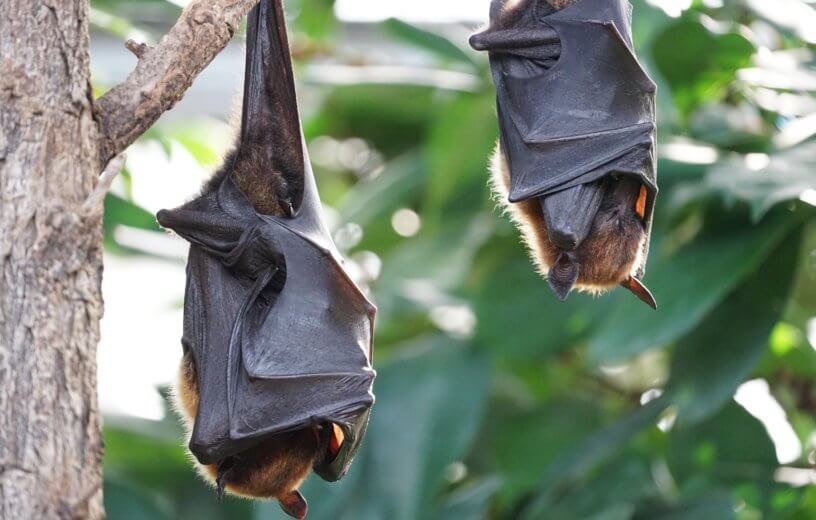MELBOURNE, Australia — Bats may hold the key to beating COVID-19, according to a new study. The flying mammals have exceptional immunity, which protects them against deadly viruses. Scientists in Australia say cracking their secret to superior health would open the door to discovering a cure for the virus.
Researchers note that bats catch COVID without getting sick. Left undisturbed in their natural habitats, they pose little risk to humans.
“Preventing progression to severe disease, or effectively treating it — in other words, emulating bats — would markedly relieve suffering and save lives,” says study lead author Professor Marcel Nold of Monash University in a media release.
The study in the journal Science Immunology identified an urgent “need for effective therapies, at least in part because of the emergence of mutations.” COVID variants such as Alpha, Beta, and Delta are progressively more infectious than the original strain. The Delta strain is up to 79 percent more transmissible than Alpha and possibly more deadly.
“Preventing infection, or enabling patients to eradicate COVID, represents the ultimate goal. But it is uncertain when either will become reliably possible. Therefore, efforts at identifying safe and effective therapies to prevent COVID from progressing to the moderate and severe disease stages are critical in the fight against the disease,” explains Prof. Nold.
The international team’s review found analyzing bats hold substantial promise and will also “better prepare us for the next epidemic or pandemic.” They discovered that a common ancestor to the virus likely appeared in bats four to seven decades ago.
“The exact bat species or intermediate host involved in the 2019 outbreak remains elusive,” Prof. Nold says.
Using bats to boost the human immune system
Although bats infect each other with SARS-CoV-2, the virus that causes COVID, they show no symptoms in their lungs or other organs — even though the same virus badly impacts humans. The resistance could be used to fine-tune the same immune responses in people. This includes boosting virus-fighting proteins known as type I and III interferon responses.
Once the severe illness has developed, inflammatory chemicals called inflammasomes could be blocked, mimicking what happens in bats. Prof. Nold notes this “could minimize the excessive inflammation, immune exhaustion, and the cytokine storms that are experienced in humans.” The immune system’s army of messengers, small proteins that transit between cells, go into overdrive, leading to organ failure and even death.
Don’t blame the bats for the pandemic
Some believe COVID actually originated in bats, passing to humans through another, as yet unidentified, animal. A number of other diseases, including SARS, MERS, and Ebola, are also thought to have jumped to humans this way.
However, ecologists and conservationists have warned bats should not be persecuted for this possible link. They are vital for the balance of nature. Many are pollinators, dispersing the seeds from fruit, and others are insectivores, eating millions of tons of insects a night.
Knowledge of bat genomes will help explain how the animals tolerate coronavirus infections which may, in the future, help in fighting pandemics. In many viral infections, it is not the virus itself that leads to death, but the acute inflammatory response brought on by the body’s immune system. Bats can control this. So, while they may be infected, they do not show visible signs of disease.
Vaccines alone won’t conquer COVID. Delta is surging through both vaccinated and unvaccinated populations. It is increasing the risk of new mutations and subjecting many to Long-COVID. The solution includes better protection, tests, and treatments.
South West News Service writer Mark Waghorn contributed to this report.
